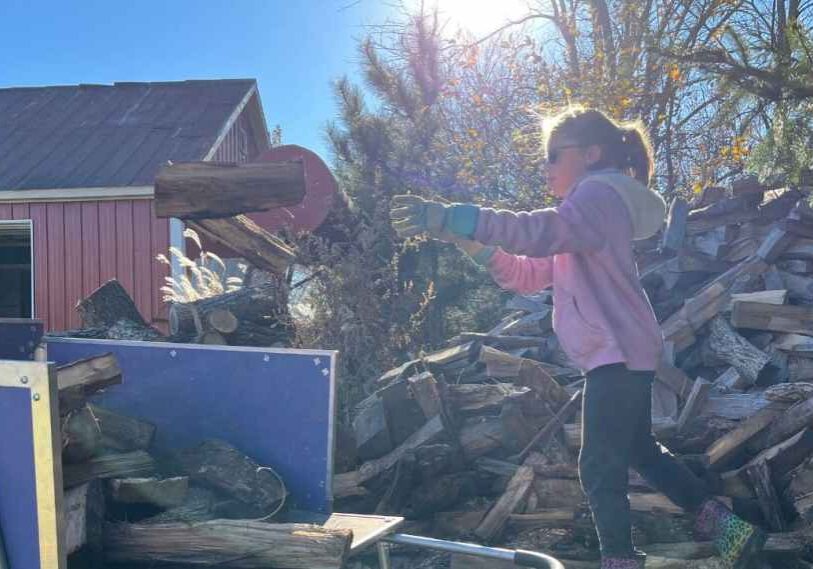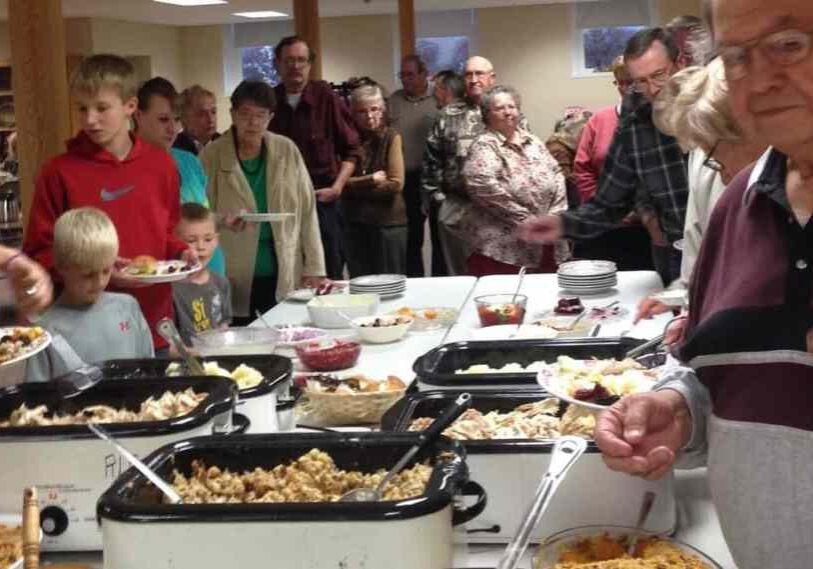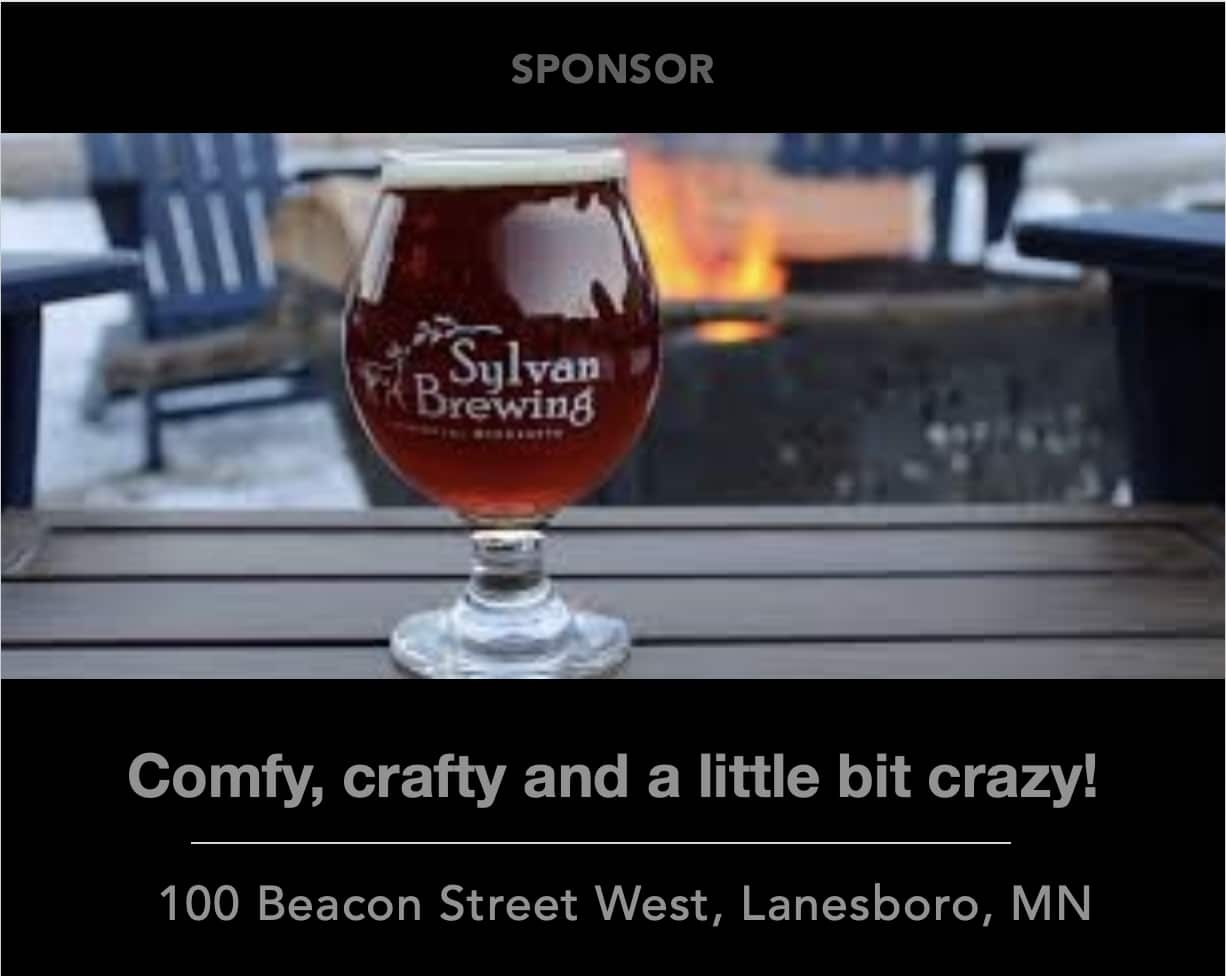Essay | Frank Walsh’s Kitchen
From the Story Project of Fillmore County: memories of a summer hay-baling job that turns into an amazing adventure

FILLMORE COUNTY — My cousin Don and I were twelve and thirteen years old the summer we first worked for Frank Walsh. We were restless, full of energy, wanting to explore new worlds and experiences beyond the farm. My uncle volunteered us to help Frank, a reclusive local farmer, get his hay in.
“Frank’s just the character to teach you young dogs some new tricks,” my uncle said on the drive over. “And you’ve never been to his place yet,” he said brightly.
We rolled our eyes but kept silent.
The July heat was already tiring. And we’d been hired hands often before, with pretty consistent results – hard, dusty work, minimal pay and worse food. For some reason, folks felt just fine about unloading their stalest potato chips and wateriest Kool-Aid on us.
Frank turned out to be a medium-tall fellow, old, but upright and straight as a rifle barrel, with long, corded arms and hands like a blacksmith – in size, color (dirty), and knobby knuckles. Bright white crew-cut hair, equally bright blue eyes, he had a permanently surprised look to his face. He studied us just as curiously.
“Frank, these are your strong backs and weak minds for the day,” my uncle joked by way of introduction.
We shook hands, said our hellos and flexed our muscles, clowning for a bit. Frank had a booming, yodeling voice.
“Byyy-yy-y God,” he said, raising his eyebrows in amusement at us, “full of kick as colts, are they? We’ll see what they are made of.”
We walked down to a shimmering, 50-acre hay field that baked in the sun. Oversized, wire-bound rectangular bales sat on the ground where they had fallen from the baler the day before.
Frank drove an ancient Case tractor and wagon between rows while Don and I jogged through the stubble and loaded and stacked the bales. When the little tractor began laboring and backfiring from pulling the weight, we headed for the barn.
At the barn, a system of ropes and pulleys and giant iron claws grabbed six bales at a time, which we lifted into the haymow and dropped with a trip switch. There were remnants of a similar system in my uncle’s barn, but aside from the Amish farms, Frank probably had the only hand-drawn or horse-drawn haylift in the county.
Not that Don and I had much time to admire it. As soon as the wagon was empty, we went back to the field.
Parched — and hungry!
After six hours of this back-and-forth routine, our legs were rubbery, our backs and shoulders sore, our hands swollen and rope-blistered (even with gloves), and our forearms hay-pricked and scratched. Our boots felt like hot lead, lined with sandpaper. And we were so dry and thirsty we could barely talk through thickened tongues and cotton mouths.
Frank had heavy streaks of white down his face, where sweat had dried and crusted. He, too, was red-faced from heat and exertion. And even his booming voice was muted.
“Byyy-hy-hy God,” he rasped, “let’s call it a day and get us some lunch.”
Up through the back porch and mudroom he led us, with a full minute’s pause while he unlocked, unsnapped, flipped and twisted the eight different locks he had on the house door. Don and I exchanged looks.

(Book and cover design by Damita Crouse; photo by Shari Jones)
Frank was a local legend for his lock obsession. Fuel deliverymen and others entertained café patrons throughout the county with tales of Frank’s locks. Now we were among the few to have seen them, and fewer still to pass through them.
Inside the kitchen was blessedly cool, and Frank invited us to sit at the table while he fetched the lunch.
Sitting in the sturdiest of the wobbly, mismatched chairs, Don and I surveyed a kitchen and table we had never imagined. They attested to a lifetime’s occupation by a bachelor farmer, with nary the briefest influence of a woman’s touch.
On the table, jars of ketchup and peanut butter rubbed elbows with boxes of Ritz crackers and breakfast cereal, a can of coal oil, a small carbon-blackened motor, an empty box of tinfoil and dried bones of Banquet Fried Chicken, a package of hot dog buns, and a 50s-era plastic radio.
In between these giants, small nuts and bolts and screws and electrical wire and tools lay strewn on stained, oily newspaper, as did several batteries, a corn husking glove, the disassembled parts of a hand planer, and a whetstone. The lone plate had dried layers of countless previous meals on it, and the plate had set so long in one spot that it had melted to the table finish itself.
The rest of the kitchen was like a living museum, a treasure trove of farm implements and nostrums and advertisements that spanned a hundred years. A hand-cranked corn sheller dominated one corner, flanked by several scythes, a post-hole digger, wooden posts, spools of wire, chicken fountains, kerosene lanterns, piles of burlap sacks, horse collars and harness and chains, and pan traps of all sizes and scariness. One of them looked like an honest-to-God bear trap.
Forge tongs, ice tongs, hay hooks, hay knives, hanging scales, lightning rod vanes that needed mending and hardware store calendars from decades earlier decorated two of the walls.
On another wall, above a cream separator with a broken handle, Grange meeting posters and product banners advertised events and tonics and liniments that were long gone before Don and I had been born. Possibly before my uncle had been born. The variety was endless. I had no idea what some items were. Don had a look of ever-increasing disbelief on his face. I was fascinated.
Milk and cookies
Frank, meanwhile, hunched over the tiny refrigerator, opened its locks and pulled out a half-gallon jug full of milk. Putting it directly to his mouth, he downed a good pint before handing it to us. Then he began unlocking the breadbox.
We looked around slowly, futilely, for a cup or glass of any kind. Realization dawned that there might not be any.
I offered the jug to Don. “No way,” he said quietly. “I don’t care – I’m dying,” I said, and tipped the jug to my mouth. Fresh, cold, sweet creamery milk never tasted so good.
Frank, seemingly energized by his duties as host, had found an unopened box of almond windmill cookies, and offered us first pick. I took several and happily crunched away. I was hungry enough, they tasted like a full-course meal. Don watched miserably, his mouth too dry for the cookies.
Frank and I passed the milk and cookies between us, feeling and looking better with each mouthful. If he’d had a spare drop of moisture in him, Don would have drooled.
The third time I offered him milk, Don finally broke. His look said we weren’t to tell his mother about this. But he had to agree, the milk and cookies were both fresh and first-rate.
“Byyy-yy-y God, boys, eat up and drink up,” Frank said. “You’ve earned it.”
By the time our ride home arrived, we both had $2.10 in pay and an invitation to come again.
We went back several times that summer, me because I was fascinated by Frank’s kitchen, and Don because he was being a good sport and keeping me company. Each time we got seriously overworked at 35 cents an hour for our trouble. But we also got Frank’s hospitality, freely and unstintingly offered.
We’d worked as hard as any men, we’d sweated under the same sun right along with him, and we were given the best of what he gave himself – the cold fresh milk and almond windmill cookies, in the kitchen, after the day’s labor.
© 2005 Nine Dragon Press. Reprinted with permission.
The book Frank Walsh’s Kitchen and Other Stories is part of the Story Project of Fillmore County, Minnesota collection. According to editor Bonnie Flaig, it presents readers with a variety of stories, often humorous, sometimes touching, about the people of Fillmore County and their way of life. These stories, written by current or past residents of Fillmore County, convey a sense of place rooted amid the bluffs, streams, rolling hills and small towns of Southeast Minnesota, a landscape known for its natural beauty and rural character.
Also published by Root River Current, A Teacher, a Rooster and an Outhouse — an essay from the Story Project written by Richard Prinsen.
Stories in the Story Project of Fillmore County collection are available through your local SELCO (Southeastern Libraries Cooperating) library.






